Tariq Khan
LING-343-1
Japan is one of the most ethnically homogenous countries in the world, with 98.1% of the population being ethnically Japanese (CIA Factbook, 2016). Estimates show that there are about 125 million native Japanese speakers (Wikipedia, 2010), in a country of just over 126 million (CIA Factbook, 2016), meaning that over 99% of Japanese people are native Japanese speakers. Only in 2011 was English made a “foreign language activity” of the Japanese school curriculum, and isn’t to be made mandatory until 2020 (Aoki, 2016).
That being said, I was expecting most signage in Japan, even in Tokyo, to be in Japanese, and was worried about how I’d navigate with a limited knowledge of Japanese. I was pleasantly surprised to find that all of the government signs in central Tokyo were in English as well. In subway stations, the different directions (川口左) would have their English translations underneath (Kawaguchi to the left). The digital screens showing route alternate between Japanese and English, and even announcements made over the PA, i.e., “The next stop is Akihabara”, are made in both Japanese and English.
I was curious as to why- after over two weeks in the center of Tokyo, I have yet to have overheard a conversation between Japanese people that wasn’t in Japanese. There are plenty of tourists in Shibuya (the Times Square of Tokyo), and there people would talk in everything from Tagalog to Dutch. My program director told me that Tokyo was gearing up for the 2020 Olympics by making their city more accessible to foreigners, and there were way too many in Shibuya.
However, outside the 23 wards that make up the downtown area of Tokyo, signage is far less likely to have English. I remember a sign in Warabi, a neighborhood just north of Tokyo in which I was temporarily staying, that was in Japanese with a funny looking mascot– my friend told me that he was the Tokyo firefighting mascot. This struck me as a little odd, considering any announcement about fire safety would be pretty important to be understood by tourists as well. Maps in Kita-Urawa, a neighborhood about 40 minutes north of central Tokyo where I am now staying, are only in Japanese. I haven’t seen any foreigners in Kita-Urawa, so it makes sense relative to the high concentration of tourists in Tokyo.
This is all regarding public signage. Even in downtown Tokyo, most stores would have minimal English, unless they were catering specifically to tourists. In Kita-Urawa, it’s nearly impossible to tell what type of store you might be looking at. Even for someone like myself who can read in Hiragana and Katakana, it is difficult to interpret the thousands of possible Kanji adorning the banners hanging from windows everywhere.
Japan has long been known for its xenophobic tendencies, according to my Taiwanese friend. She said Japanese shopkeepers are generally suspicious of Chinese tourists, who aren’t used to the strict manners seen in Japan. They see Chinese tourists, who may be accustomed to spitting on the streets or casually littering, as disrespecting their country. I was shocked to realize that, of the 2.9 million visitors to Japan in April 2019, over 1.3 million were from China, Taiwan, or Hong Kong, which are Chinese-speaking countries. In comparison, only about 324,000 were from the US, Australia, Canada, and the UK, which were the major English-speaking countries listed on tourism.jp.com. It would stand to reason that more of the signage would accommodate the Chinese tourists, but I reckon it might be that the Japanese would encourage white, English-speaking tourists rather than Chinese.
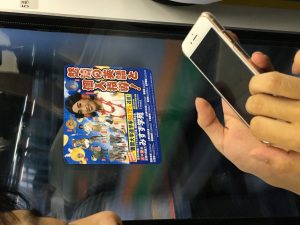
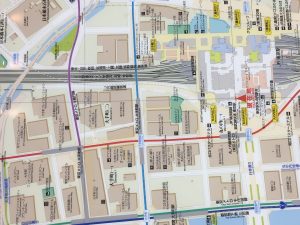
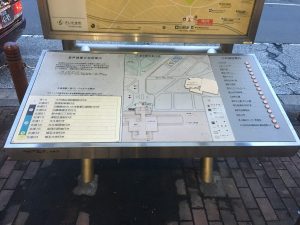
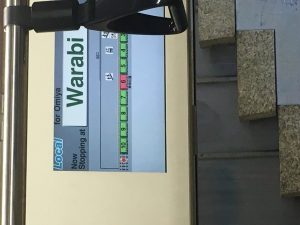
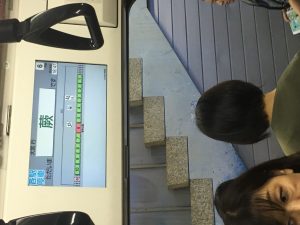

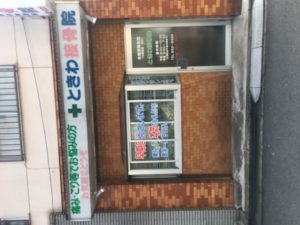
Sorry I don’t know how to rotate the images!
Hi Tariq! I found your essay really interesting. In your essay, you said that learning a foreign language won’t be made mandatory until 2020. What percentage of people that you’ve met already speak a second language in Japan?
Hi Tariq,
I found it particularly interesting when you mentioned the general suspicion of Chinese tourists considering they make up the bulk of tourism in the country? Do you think any government mandated changes will occur to change this to make Japan more tourist-friendly?
Hi Tariq, I really enjoyed reading your essay. I thought your mention of non-speakable languages like braille and accessibility measures in public institutions in Japan was really interesting. There is definitely a lot to be said about the socio-political and spatial nature of linguistic landscapes in terms of what languages or ways of presenting language we might not see, like braille. I’m in Dublin and reading this made me realize that I have hardly noticed any braille here.